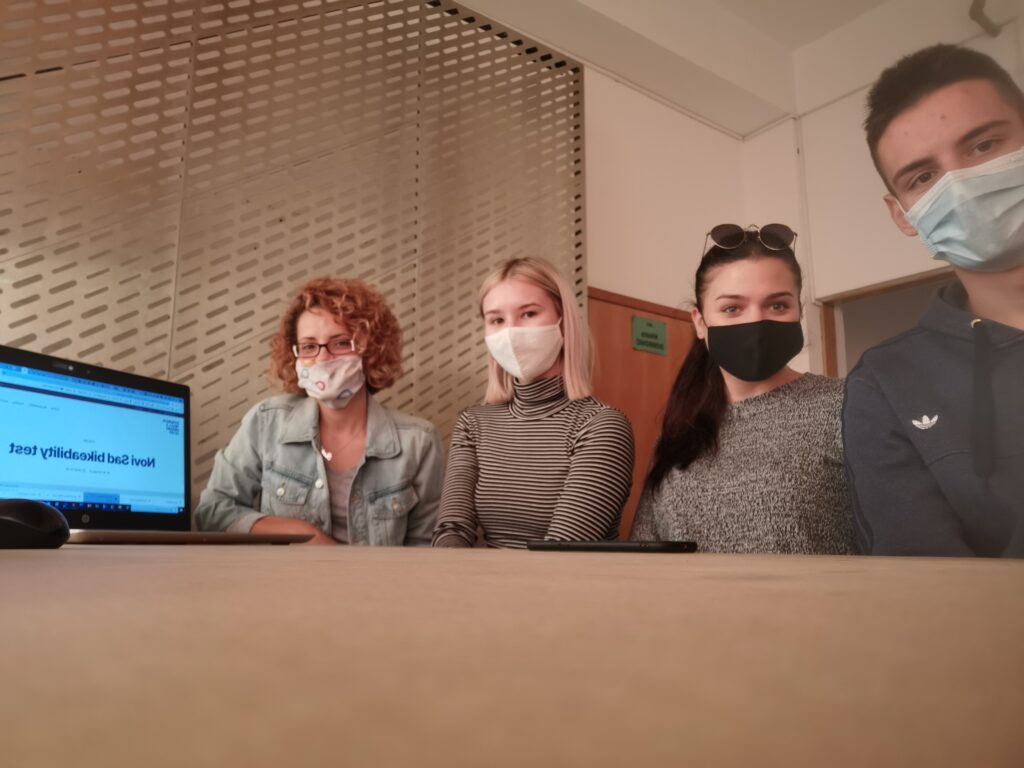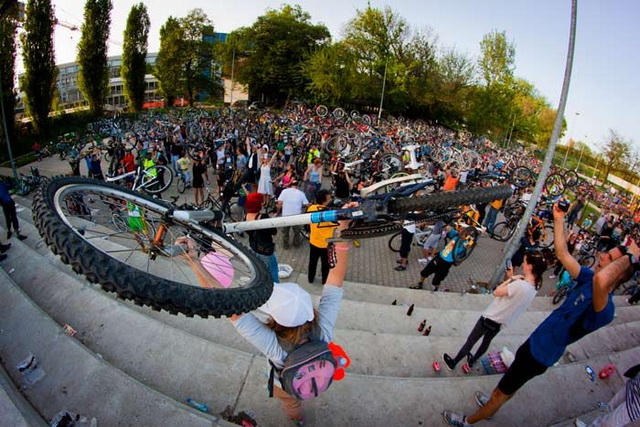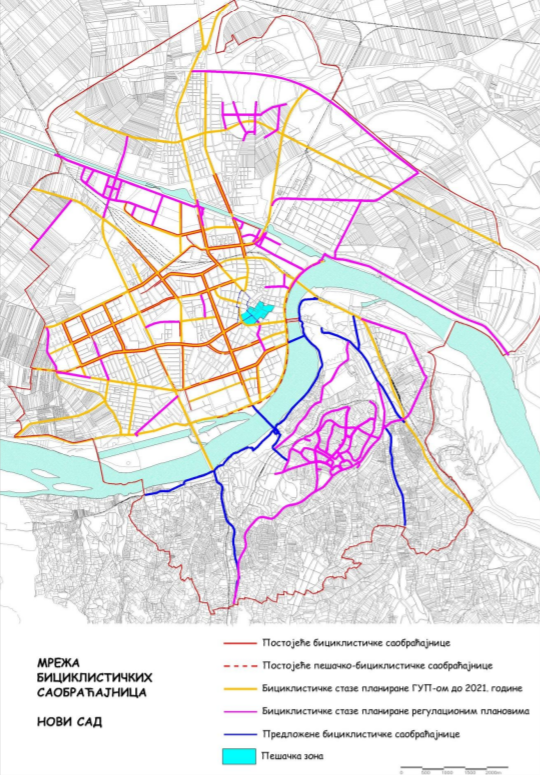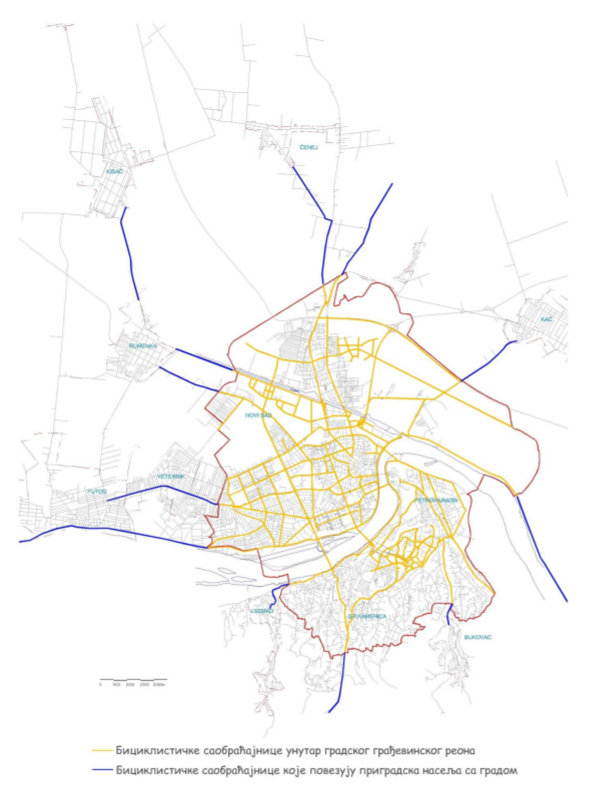
Novi Sad is a city of Serbia with the most cyclists going to work in the winter, where the number of cyclists in the city is growing by 9 percent a year.
This being said, it is obvious that Novi Sad has a strong community oriented towards cycling, one of them being the Novi Sad Critical Mass. It is important to note that Critical Mass is an event, not an organization. It was initiated by the Novi Sad Cycling Initiative, cultivating a non-political character and a form of mass bike-riding, not a protest. The Novi Sad Critical Mass gathers members of all ages, and the youngest participant being only 11 months old.
Novi Sad’s cycling culture
Since there is a constant need to articulate civil demands and solve problems related to cycling , as well as the need to synchronize individual actions related to the popularization of cycling, which is increasingly common, there was a need to form a unique citizen organisation. “Novi Sad Cycling Initiative” was established on September 18, 2011 as an independent, non-governmental, non-profit organization, founded to achieve goals in the field of promotion, development and promotion of cycling, healthy lifestyles, energy efficiency and sustainable development. NSCI has decided to participate and influence the decision-making related to cycling through activism, with the desire that projects intended for cyclists be realized according to the needs of cyclists.
source: https://nsbi.org.rs/sr/novosadska-kriticna-masa

source: https://www.explorenovisad.rs/en/explore-vesti/kriticna-masa-krece-u-17-casova-iz-limanskog-parka/
Research agenda
During the research phase, we cycled through the routes from the university to the outskirts of the city that are most commonly used in Novi Sad. Based on indicators such as safety, functionality, connectiveness, undisturbed flow of the bicycle lanes etc., we chose three lanes to consider. Groups we wanted to adress with these lanes would be everyday commuters: students and university employees.
The routes you most commonly find here in Novi Sad are of the flat type. Most people get on their bikes to ride here in the months of May and July. Lane on the Novi Sad’s Kej is among the most popular ones giving it’s beautiful surroundings, including Danube and rich vegetation.

Source: blog authors
Potentially problematic situations that occurred to us while doing a field research are related to bicycle routes not being continual. Also, they are commonly found in bad condition, lacking marks and signalisation. They are often interfering with pedestrian lanes as well. Our main goal would be to adress a space for improvement of bicycle infrastructure and to propose solutions for more bikeable city by indicating some important constrains and obstacles.
Bicycle lane lenghts
The existing length of bicycle paths is 63.3 km.
The existing length of bicycle roads is 65.6 km.
The planned length of the bike paths is about 175 km.
The planned length of bicycle roads is about 207 km.
The construction of bicycle infrastructure is one of the measures that will contribute to development of bycicle traffic. (Picture 1 and Picture 2)

source:http://www.nsurbanizam.rs/sites/default/files/1770%20Saobracajna%20studija-NOSTRAM-.pdf
source:http://www.nsurbanizam.rs/sites/default/files/1770%20Saobracajna%20studija-NOSTRAM-.pdf
In the old town language (narrow center – pedestrian zone, Podbara, Salajka) it is necessary regulatory measures allow the movement of cycling. By connecting the Boulevard Mihajla Pupina and Temerinska streets through the pedestrian zone and the old city center (Modena Street, Njegoseva, Pozorisni trg, Trifkovicev trg, Svetozara Miletica, Nikolajevska, Pasiceva, Marija Trandafil), enable cyclists to avoid moving through the very heavenly streets of Upsenski and Jovana Subotica.
Research methodology
This map depicts three of the chosen routes, all leading to the Faculty of Technical Sciences, as a intersective area of our research. The grey route (2.58km) is starting on Patrijarha Pavla Boulevard, extending through cara Lazara Boulevard. Continuing through that boulevard, the road meets the Kej area by the Danube river, marked with a light blue route(2.07km). The longest route (3.57km) is the red route, starting from the University campus and stretching through the Old town (city center) towards the part of the town called Detelinara.


